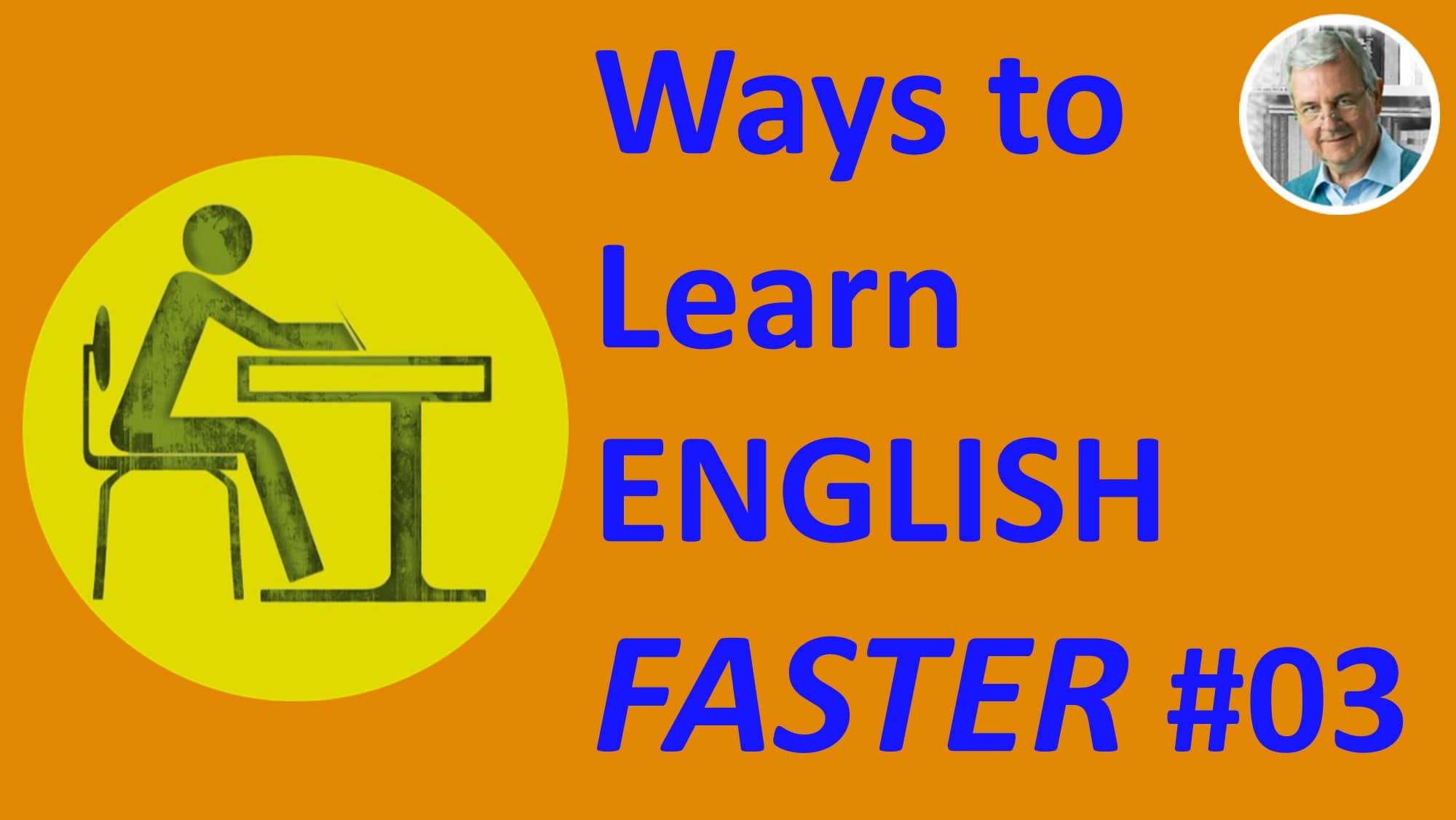How to Learn English Faster – Tip No. 4
How to Learn English Faster – Tip No. 4
Speed up the learning process by applying the tips in this series of videos:
How to Learn English Faster
Here is a transcript of the video “How to Learn English Faster – Tip No. 4”
Slide 2:
Some students like to learn grammar by studying grammar books. If this method works for you, fine!
However, from my experience, the vast majority of students find this method difficult, tiring, and boring.
If you are in this group, then pay attention to the suggestion that follows . . .
First, a quick reminder:
Slide 3:
Continually IMPROVE YOUR ENGLISH
Click the subscribe button
the Bell icon
All
Slide 4:
Tip #04: Learn Grammar Through Absorption
Definition of ABSORPTION: The process of taking in, assimilating, soaking up
e.g. a sponge soaking up water
A baby is not taught grammar rules. Through listening and repetition, a baby naturally absorbs the
grammar by listening to words, phrases and sentences.
Slide 5:
So focus most of your time and energy on LISTENING, LISTENING, LISTENING to English through:
YouTube videos
podcasts
Movies/TV shows
radio
and then practice speaking at every
opportunity. For example, find free English conversation groups through Google or
social media platforms and join them.
Slide 6:
The main areas students normally find challenging
when it comes to English grammar are:
1. Definite | Indefinite Articles: a, an, the
2. Prepositions
3. Tenses (especially Past Perfect, Present Perfect)
4. Irregular verbs
Slide 7:
So in addition to listening at every opportunity to English, set yourself short, high-intensity goals, focusing on one of these challenging areas.
Set a 7-day goal to spend 15 minutes a day using resources such as YouTube or online courses to educate yourself on one particular area.
Slide 8:
For example, if you want to understand
Definite | Indefinite Articles, then enroll in
my course on Udemy:
Master Definite | Indefinite Articles
Go to: http://ma.goodenglish.online
(or click on the link in the DESCRIPTION below)
It uses the picture-sentence example method. By examining hundreds of illustrated sentences, you develop an instinct for what sounds right when using a, an, and the.
Slide 9:
Or if you want to become confident using PREPOSITIONS or IRREGULAR VERBS
simply search Google images (images.google.com)
with the keywords such as:
English prepositions
prepositional phrases
irregular verbs
You will find hundreds of helpful flashcards and charts. Look especially for those that use graphics to illustrate. Set a 7-day goal to review these resources for 15 minutes a day.
Slide 10:
If you would like to practice tenses, then use the exercises on this link:
http://www.englishpage.com/verbpage/verbtenseintro.html
(or click on the link below in the Description)
You will also find helpful explanation pages for each tense.
Slide 11:
Additionally, type a specific question into YouTube search. For example:
What is the difference between
OTHER
ANOTHER
THE OTHER
You will find a huge number of videos on any grammar question.
See my video here:
https://youtu.be/r_TV-pOFaR8
Slide 12:
So, to SUMMARIZE:
1. The easiest way to learn grammar is by the ABSORPTION method.
Continually LISTEN to English at every opportunity and your brain will naturally absorb the pattern of sentences and English grammar.
Slide 13:
2. Supplement LISTENING with short, high-intensity goals to focus on one of the four main areas:
Articles
Prepositions
Tenses
Irregular verbs
Slide 14:
3. Use YouTube search to find answers to specific grammar questions on a “need-to-know basis”.
Slide 15:
Has this video helped you?
LIKE | SHARE | COMMENT NOW!
Slide 16:
Build A Powerful English Vocabulary
with my FREE course on Udemy
Go to: http://goodenglish.online
If you are interested in how to learn English faster, be sure to check out this page for another tip:
How to Learn English Faster – Tip No. 3
Mnemonics are another accelerated learning method. See these examples:
MNEMONICS for English Vocabulary No. 5
Image Credits
Slide 9 – Google image search results
Fair Use
Slide 8 – hippie
Creative Commons
https://flic.kr/p/7MFdyY
Regarding the use of illustrations and photographs used in this video:
Creative Commons Attribution Licence
Others are allowed to copy, distribute, display, and perform copyrighted work – and derivative works based upon it if they give credit to the creator or source.
https://creativecommons.org/licenses/by/4.0/legalcode
Fair Use Section 107 of the Copyright Act provides the statutory framework for determining whether something is a fair use and identifies certain types of uses—such as criticism, comment, news reporting, teaching, scholarship, and research—as examples of activities that may qualify as fair use.
https://copyright.gov/fair-use/more-info.html





